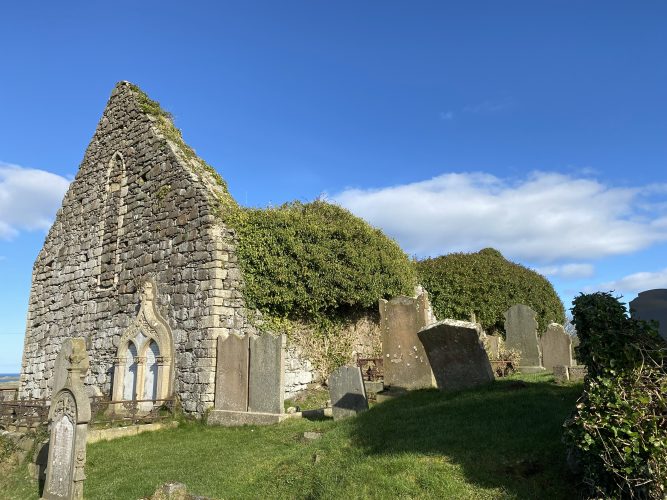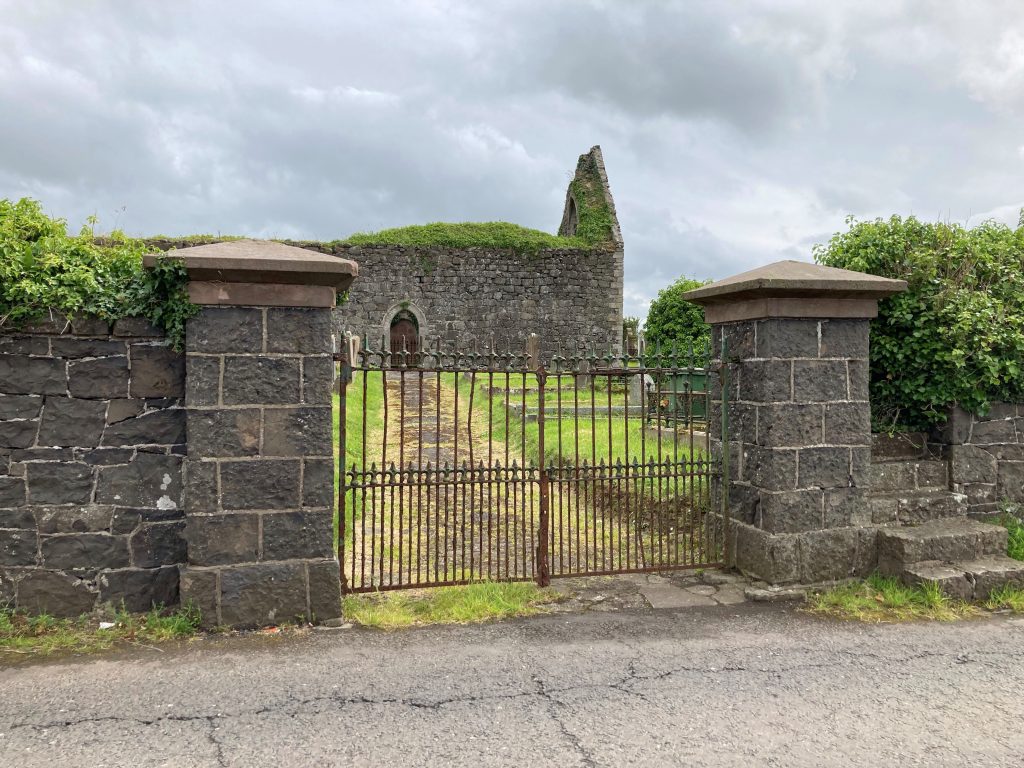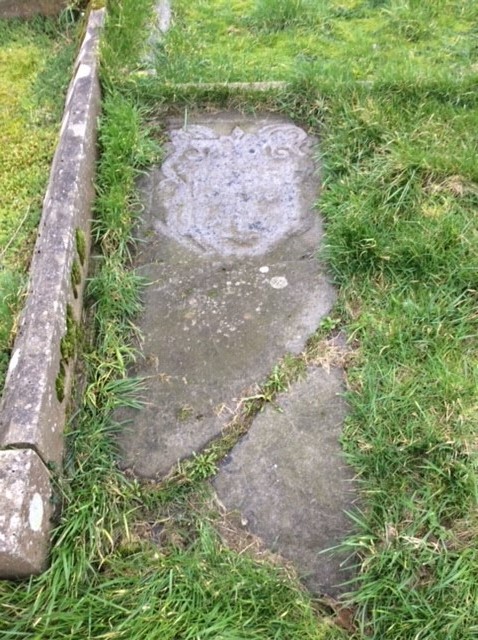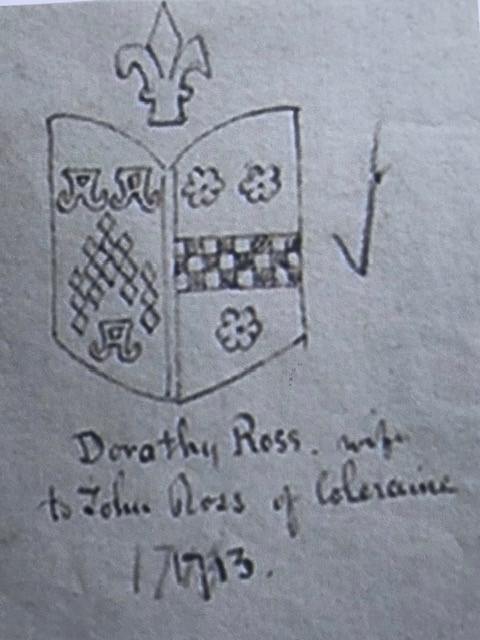1. Ballywillan Old Churchyard

Playful Museums
27th February 2023
2. Bruce’s Cave
6th March 20231. Ballywillan Old Churchyard
In Ballywillan Old Churchyard, just south of Portrush, there is a gravestone at the southwest corner of the old church belonging to a Mrs Dorothea Ross, wife of John Ross, a merchant in Coleraine.
The Coat of Arms and writing on the gravestone have almost vanished with time and weather, but folklore tells us that Mrs Ross was the illegitimate daughter of King James II, who ‘dallied’ with Dorothea’s mother while staying the night at a house locally when he was en route to the Siege of Derry in 1689.
Tradition also states that her gravestone was paid for by Queen Anne.
The Mystery of the Portrush Princess: Dorothea Ross (1671 – 1713)
By Clare and Paul Ross
In Ballywillan Old Churchyard, just south of Portrush, there is a gravestone at the southwest corner of the old church belonging to a Mrs. Dorothea Ross, wife of John Ross, a Merchant in Coleraine. The Coat of Arms and writing on the gravestone have almost vanished with time and weather, but folklore tells us that Mrs Ross was the illegitimate daughter of King James II, who ‘dallied’ with Dorothea’s mother while staying the night at a house locally when he was en route to the Siege of Derry in 1689/90.
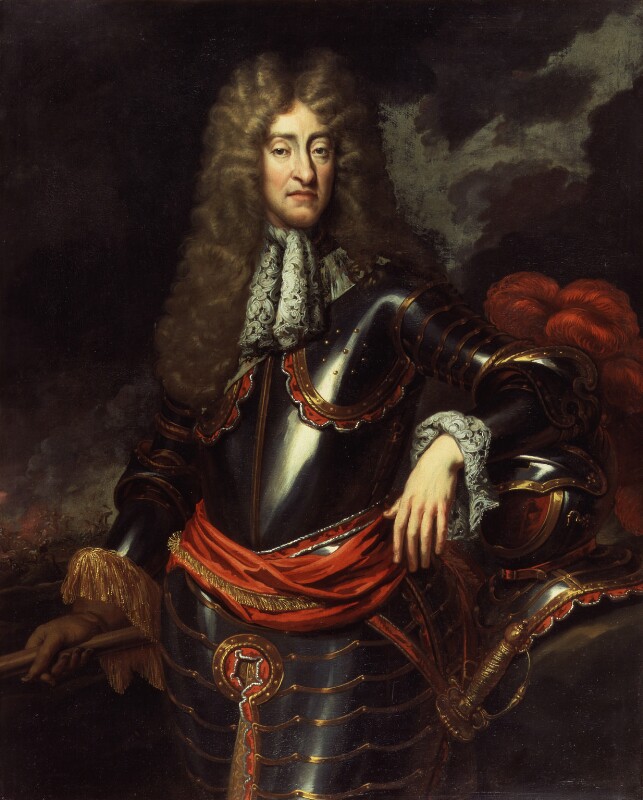
King James II by Unknown artist, oil on canvas, circa 1690, NPG 366 © National Portrait Gallery, London
Folklore also states that her gravestone was paid for by Queen Anne (her half sister?) and bears an interesting Coat of Arms.
The inscription on the gravestone was readable in the 1830s when the ordinance survey recorded:
“The remains of Mrs. Dorothea Ross,
wife to Mr. John Ross of the town of Coleraine, merchant, who departed her mortal life the 11th day of December, anno domini 1713, in the 42nd year of her age.”
In (Vol 16) Ordnance Survey Memoirs of Ireland, written during the 1830s, it was mentioned at a time when the writing was clearer. The drawing above and a few others relating to Old Ballywillan was made by George Victor Du Noyer MRIA (1817 – 1869), a professional artist working with the Irish Ordnance Survey and the Geological Survey of Ireland.
In the Coleraine Constitution newspaper, 2nd April 1881, there is an article entitled “A Rambling Tour from Portrush to the Giants Causeway” they quote an excerpt from Mrs Ward’s “Coleraine and Portrush Almanac” written in 1862:
The Coleraine Constitution, Saturday 2nd April 1881, “A Rambling Tour from Portrush to the Giant’s Causeway.”
On the sloping heights behind the town, and a little over a mile distant, stand the grey old ruins of the once Parish Church of Ballywillan (or the town of the mill)… The old church is stated to have been built in the eleventh or twelfth century, in the early English style… The late Mrs Ward, author of Waves on the Ocean of Life, in her Coleraine and Portrush Almanac, 1862, mentions as follows:- “About thirty feet from the west gable is an old tombstone, the inscription in raised letters, but is now so effaced as to be almost illegible. Tradition asserts that it covered the remains of a king’s daughter. If any antiquary can trace out the inscription it would add an attraction to this neglected spot.” I have been able to decipher the inscription, which runs thus – “Here lieth the interred body of Mrs. Dorothea Ross, wife of Mr. John Ross, of the town of Coleraine, merchant, who departed her mortal life the 11th day of December, Anno Domini 1713, in the 42nd year of her age.” The letters “I.R,” or in those days for “J. R.,” appear, one letter on the left, the other on the right side of the flat slated tombstone, which bears the device of a shield, surmounted with the royal emblem of the Fleur-de-lis, quartered by a bar of checked squares, with two of the above-named flowers on the upper corner of the left side, and one on the lower corner of the same side. On the upper corner of right side there appears to have been two roses, and on the lower section one rose, the latter very much obliterated
By Time’s rude hand,
although the appearance of the flat slab leads me to believe that it was not place over the deceased for perhaps a considerable time after her death, from the modern way in which the inscription reads. There is also a half lion rampart under the right side of the shield. The deceased is stated to have been a natural daughter of James II.
The boundary line dividing the counties of Londonderry and Antrim runs through this graveyard.
Sam Henry’s book – The story of St Patrick’s Church, Coleraine, mentions Dorothea:
“In the old churchyard of Ballywillan, there is a very interesting flat tombstone with the Stewart arms. It marks the grave of Dorothea, wife of John Ross, of Waterside, Coleraine. John was an inveterate punster. On his trade tokens, bearing his name and occupation – “John Rose, one can of beer,” he has adorned the token with a rose for his own name and, on the other side, with a bear (because, I suppose, you can’t have beer without brewin’ (Bruin); or was John just a bad speller?). Dorothea Ross was supposed to have been a natural daughter of King James II and tradition says she was an actress in the retinue of the army that laid Siege to Derry.”
Extracts of information from Bluemantle Pursuivant of Arms,
H.M. College of Arms, London to Mr. & Mrs. W.P. Ross.
“It may first be worth noting that coats of arms are technically granted to specific individuals, and then pass to their descendants in the male line. Therefore, there is no such thing as a coat of arms for a surname in general. This was, however a frequent misconception and as such many individuals would adopt, without authority, arms which belonged to other families with the same surname as theirs. An additional complexity relates to Ireland; because of the unstable conditions in much of Ireland, records of the use of heraldry on the scale of those which exist in England are lacking and are particularly absent in the Tudor and Stuart periods.
The coat-of-arms copied from the gravestone is an impaled (combined) coat of arms for a married couple, with the husband’s coat of arms on our left and the wife’s on the right. The arms for John Ross, therefore, here seem to be a crude representation of a chevron divided by a chequered pattern, surrounded by water-bougets (a heraldic representation of vessels for carrying water). Arms which contain three water-bougets are common and ancient arms used by families named Ross. Naturally, due to the settlement of Ulster, it is extremely common for the arms borne in Ulster to be of Scots origin, and therefore it may well be that John Ross of Coleraine used these arms on the basis of a genuine or at least presumed descent from the Scottish Rosses.
The arms for Dorothea Ross seem likely to be those for someone who was born to a family named Stewart/Stuart. The generic form of the coat of arms used by the Scottish Stewart’s is Or, a Fess Chequy Azure and Argent (a gold shield with a horizontal stripe of a blue and white chequered patten). Different Stewart families and branches would difference their arms with different additions. Many individuals would later have variants of the Stewart Arms confirmed to them by the Ulster King of Arms, but none of them have anything resembling the three ‘flowers’ from the drawing above. Given the looseness of the heraldic control in Ireland, it could well be an addition by Dorothea Ross’s family which was never officially recorded.
Above the coat of arms is a fleur-de-lis. A symbol above the coat of arms would normally be expected to be a crest, but women generally do not use crests, and there does not appear to be any record of the use of a fleur-de-lis as a crest by any families named Ross or Stewart, and it may be that it is purely a decorative element.
In conclusion, the arms on this gravestone seem to represent a lady who had been born a Stewart and married to Ross, the latter of which matches what we know of her married name. However, what of the allegations that she was James ll’s illegitimate daughter? In heraldic terms, it seems that heraldic evidence for this are her having Stewart arms – Stewart being the family from which the Royal house of Stuart came- and the appearance of the fleur de lis, long a royal badge due to the claim to the French throne by the Kings of England. However, a certain caution is necessary. Stewarts in Ulster in the 18th century would have been common, most of them having no or extremely distant connections to the Royal dynasty. Mrs Ross could have easily been the daughter of an ordinary Mr Stewart. Additionally, in that time period, illegitimate children usually took the surnames of their mothers, or their mother’s legal husband, and so an illegitimate daughter of James ll would not necessarily have been known or viewed as a Stewart. James’s acknowledged illegitimate issue took the invented and unsubtle surname of FitzJames. As for the fleur de lis, these have always been popular decorative symbols used in many non-royal contexts.
A final, and obvious, point is that if Mrs Ross was 42 when she died in 1713, she would have been born around 1671. This would exclude the accounts found online and in various publications that James fathered her during the Williamite War in 1689. It would also mean that if James was Mrs Ross’s father, the alleged relationship with her mother did not take place in Ireland. Therefore, while the heraldic evidence of the gravestone is compatible with Mrs Ross being an illegitimate daughter of King James, neither can it be regarded as strong evidence in itself”.
There are still many unanswered questions regarding the grave of Dorothea Ross – ‘The Mysterious Princess’.
Sources
- Day, A., McWilliams, P. & English, L. (Eds), 1995, Ordnance Survey Memoirs of Ireland. Parishes of Co. Londonderry XII 1829-30, 1832, 1834-6. Coleraine & Mouth of Bann. Vol 33, The Institute of Irish Studies, Queen’s University Belfast
- Day, A. & McWilliams, P. (Eds), 1992, Ordnance Survey Memoirs of Ireland. Parishes of Co. Antrim V 1830-5, 1837-8. Giant’s Causeway and Ballymoney. Vol 16, The Institute of Irish Studies, Queens University Belfast
- Northern Constitution newspaper 2nd April 1881, retrieved from The Irish Room, Coleraine Library
- Henry, S., 1941, The Story of St Patrick’s Church, Coleraine. Coleraine Chronicle Co, Ltd
- Bluemantle Pursuivant of Arms, H.M. College of Arms, London, 2020
- McGrattan, H., 2015, Portrush – The Port on the Promontory. Impact Printing
Directions
Co-ordinates: 55.1879, -6.6341
This project is receiving financial support via the District Council Good Relations Programme.


